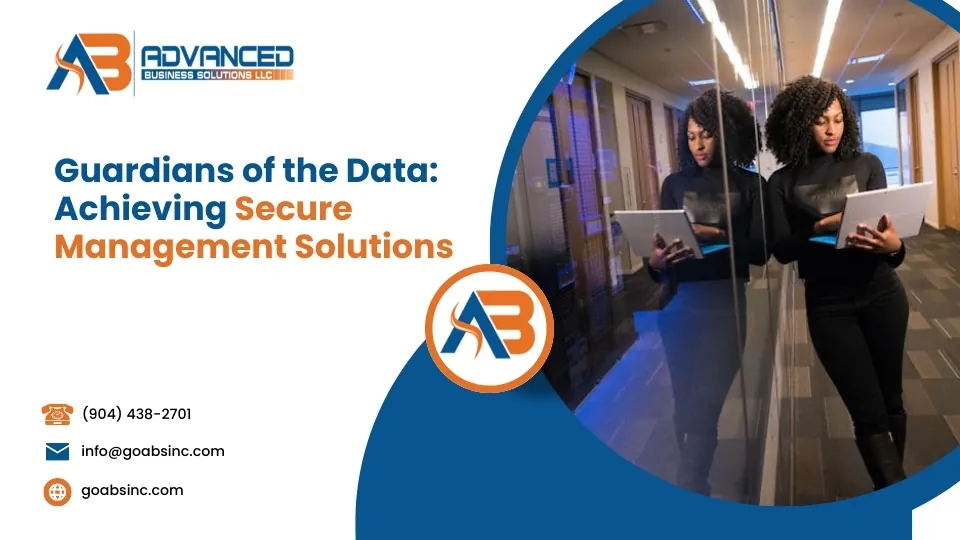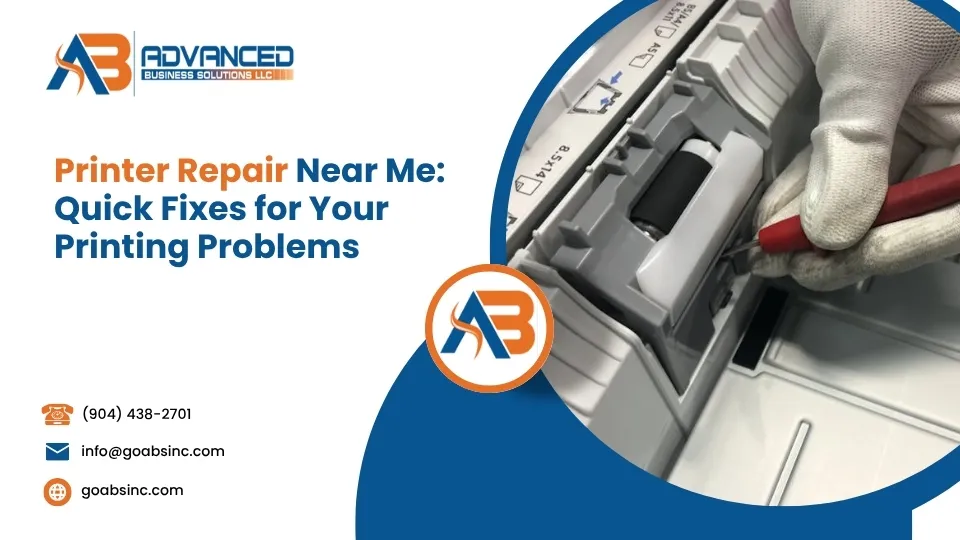Looking for secure data management solutions? Here’s what you need to know:
- Data encryption: Protects information at rest, in transit, and in use
- Access controls: Restricts data access based on user roles and permissions
- Monitoring systems: Detects and alerts on suspicious activities
- Regular backups: Creates immutable copies for recovery
- Policy enforcement: Ensures consistent security practices
Secure data management solutions are comprehensive systems that protect your organization’s sensitive information throughout its entire lifecycle – from creation and storage to processing and eventual disposal. With businesses generating over 328 million terabytes of data daily and more than 30 billion records breached in just the first quarter of 2024, protecting your data isn’t just good practice – it’s essential for survival.
“Every time a patient record is queried, unencrypted data is exposed to potential breaches,” notes one healthcare security expert. This vulnerability extends across all industries, with manufacturing, finance, healthcare, and consumer services facing the highest targeting rates.
Traditional approaches that focus solely on perimeter security are no longer sufficient. Modern threats require a data-first strategy where protection travels with the information itself, regardless of where it moves or who accesses it.
Office Manager Olivia at Florida Medical Associates finded this the hard way: “We had firewalls and antivirus, but when an employee accidentally emailed patient records to the wrong address, those protections meant nothing. Now we use a system that keeps our documents encrypted and tracks every access.”
The stakes couldn’t be higher. Beyond compliance requirements like GDPR and HIPAA, data breaches bring financial penalties, reputation damage, and operational disruptions that can cripple a mid-sized business. Studies show 65% of US companies faced external cyber threats in 2022 alone.
Effective data management isn’t just about security—it’s about making information accessible to those who need it while keeping it protected from those who don’t. The right solution balances protection with productivity, ensuring your team can work efficiently without compromising sensitive data.
Search Intent & Promise
This guide aims to explain secure data management solutions for Florida businesses seeking to protect their valuable information assets. We’ll cover everything from core security features and deployment options to implementation best practices and compliance requirements. Whether you’re a healthcare provider in Orlando, a financial services firm in Jacksonville, or a manufacturing company in Gainesville, you’ll find actionable insights to strengthen your data security posture.
What Is Secure Data Management and Why It Matters
Picture this: your business data is like gold – valuable, sought after, and worth protecting. Secure data management goes beyond just storing files in a safe place. It’s a complete approach that shields your information at every step of its journey using strong technologies, clear policies, and smart procedures.
Unlike simply saving files on a computer, secure data management solutions wrap your data in layers of protection through several important features:
- Smart classification that finds and organizes sensitive information
- Strong encryption that protects data whether it’s stored, moving, or being used
- Careful access controls that only let the right people see what they need
- Detailed tracking of who accessed what and when
- Rules that enforce security policies automatically
- Reliable backup systems that can rescue your data in an emergency
People remain the biggest weak spot in any security system. According to the Verizon Data Breach Investigations Report, a whopping 85% of data breaches happen because of human mistakes. It might be as simple as leaving a document on the printer, sending an email to the wrong person, or using a password that’s too easy to guess.
“Getting comfortable with your data security is like leaving your front door wide open,” a cybersecurity expert once told me. “Everyone in your company, from the top executives to the newest hire, plays a part in keeping information safe.”
Rules and regulations also push businesses toward better data protection. Standards like GDPR, HIPAA, PCI-DSS, and industry-specific requirements set strict guidelines for handling information, with hefty penalties if you don’t follow them.
Here at Advanced Business Solutions, we understand these challenges and offer comprehensive Document Management Solutions designed to keep your information secure while making it easier to access and improving your workflows.
Key Business Impacts
Poor data security can hurt your business in ways that go far beyond the immediate problem:
Reputation Damage: Trust takes years to build but can vanish in seconds. PwC found that 87% of consumers will simply take their business elsewhere if they don’t trust how you handle their information.
Financial Penalties: According to IBM’s Cost of a Data Breach Report, the average data breach now costs $4.45 million (2023). For Florida small and medium businesses, even a fraction of this amount could be devastating to your bottom line.
Operational Disruption: When a breach happens, you often need to shut down systems while fixing the problem. This means lost productivity and unhappy customers. In competitive markets like Jacksonville or Orlando, this downtime can send customers straight to your competitors.
Legal Liability: Beyond regulatory fines, affected customers might sue you. The legal costs alone can overwhelm a small business, even before any judgments.
ROI Benefits: On the bright side, investing in secure data management solutions pays off significantly:
- Your chance of experiencing a breach drops by 27%
- If a breach does happen, it costs 28% less on average
- You can identify and contain breaches 55% faster
- Your regulatory compliance becomes 30% more efficient
Secure Data Management Solutions vs. Traditional Storage
Traditional storage methods mainly focus on having enough space and making files easy to find. Security often feels like an afterthought. These systems typically rely on outer defenses like firewalls and antivirus programs, leaving your data vulnerable once someone breaks through these barriers.
Secure data management solutions take a completely different approach:
Data-Centric Protection means your security travels with the data itself through encryption and access controls. Think of it as your data wearing its own bulletproof vest wherever it goes.
Zero-Trust Architecture assumes nobody and no system is automatically trustworthy. Everyone must prove their identity before accessing anything sensitive—like having to show your ID every time you enter a building, no exceptions.
Granular Access Controls follow the “least privilege” principle—giving people only the exact access they absolutely need, nothing more. It’s like having special keys that only open specific doors rather than master keys.
Unified Management gives you one central dashboard to see and control all your data repositories. Imagine having a single security monitor showing every room in your building.
Intelligent Classification automatically finds and categorizes sensitive information so it gets the right level of protection—like having a smart system that recognizes valuable items and puts them in the appropriate safe.
Comprehensive Audit Trails keep detailed logs of who accessed what data and when. It’s like having security cameras recording every interaction with your information.
As an IT director from a St. Augustine financial firm told us recently: “We used to think our firewall was enough. Now we understand that data needs its own armor, regardless of where it lives.”
Secure Data Management Solutions: Core Features & Protections
When it comes to protecting your business information, modern secure data management solutions do much more than just lock files away. They create multiple shields around your data, each working together to keep your information safe no matter what happens.
Zero Trust Architecture
Remember the old “trust but verify” saying? Zero trust flips that completely with a “never trust, always verify” approach. It’s like having a security guard who checks everyone’s ID – even if they’ve worked there for years.
“We used to give network access and assume everything was fine,” explains Maria, an IT director at a Tampa healthcare provider. “Now our system verifies every user, every device, and every access request – no exceptions.”
This constant verification means even if someone steals credentials, they still face multiple checkpoints before reaching sensitive data.
Encryption at Rest
Your stored data needs solid protection, whether it lives on servers, in databases, or backup drives. Think of encryption at rest as a high-security vault that requires special keys to access.
Modern secure data management solutions use military-grade AES-256 encryption that would take supercomputers thousands of years to crack. The best part? This fortress-level security works quietly in the background without slowing down your team’s access to information they need.
Encryption in Transit
Data doesn’t just sit in one place – it moves constantly between systems, devices, and users. Encryption in transit wraps your information in protective coding during these journeys.
From secure website connections (TLS/SSL) to virtual private networks (VPNs) for remote workers, this protection ensures that even if someone intercepts your data mid-travel, they can’t read or tamper with it.
Encryption in Use
The trickiest security challenge happens when data is actively being used or processed. Innovative technologies now protect information even while you’re working with it:
“Encryption in use is the final frontier of data protection,” explains a data security specialist. “With technologies like confidential computing, we can now protect data even while it’s being processed.”
These advanced methods include memory encryption, secure processing environments, and clever techniques that let computers work with encrypted information without ever fully decoding it.
Access Control & Authentication
Controlling who can access what information forms the backbone of any security system. Modern solutions use role-based permissions that give each person exactly what they need – no more, no less.
Multi-factor authentication adds extra verification steps beyond passwords, while just-in-time access provides temporary permissions only when needed. For your most sensitive systems, privileged access management creates special safeguards around administrator accounts.
Immutable Backups & Recovery
If ransomware strikes or systems fail, your backup strategy becomes your lifeline. Secure data management solutions create special “write-once-read-many” backups that can’t be altered once created – even by administrators.
These immutable copies, sometimes stored in physically disconnected systems (air-gapped), ensure you always have clean data to restore, no matter what happens to your primary systems.
Monitoring & AI-Powered Analytics
The best security systems don’t just build walls – they actively watch for threats. AI-powered monitoring tools learn what normal activity looks like, then flag unusual behaviors that might indicate a breach.
These systems can spot subtle warning signs humans might miss, like an employee suddenly downloading large amounts of data or accessing files at unusual hours.
At Advanced Business Solutions, our Secure Document Management Solutions incorporate all these protections to safeguard your critical business information across Florida.
Essential Capabilities Checklist
When shopping for secure data management solutions, make sure your chosen system can:
- Automatically find and classify sensitive information
- Apply appropriate protections based on data sensitivity
- Provide a single dashboard for managing security policies
- Keep detailed records of who accessed what and when
- Detect and respond to suspicious activities
- Generate reports for regulatory compliance
- Ensure business continuity after security incidents
- Work smoothly with your existing software
- Grow alongside your business without performance issues
- Balance strong security with user-friendly operation
How the Best Solutions Protect Data in All Three States
Think of complete data protection as a three-part harmony, with each element playing its crucial role:
At Rest Protection keeps your stored information safe using specialized hardware for encryption key storage, transparent database protection that works behind the scenes, and file-level shields for documents and media.
In Transit Protection secures data journeys through end-to-end encryption, careful certificate management, secure programming interfaces, and outbound monitoring that prevents sensitive information from leaving your network accidentally.
In Use Protection represents the newest frontier, using methods like tokenization (replacing sensitive data with non-sensitive equivalents), format-preserving encryption (maintaining data structure while encrypted), and micro-sharding (splitting data across multiple locations).
“We’ve eliminated security blind spots,” shared the IT director of a Jacksonville financial firm after implementing comprehensive protection. “Our data is protected whether it’s stored in our databases, moving across our network, or being processed by our applications.”
Cloud vs. On-Premises Security Architecture
When it comes to deploying secure data management solutions, you’ve got options. Let’s explore what each approach brings to the table – because where your data lives matters just as much as how it’s protected.
Public Cloud Security
The public cloud offers some compelling benefits for Florida businesses. You can get up and running quickly, scale when you need to, and tap into built-in redundancy that spans multiple geographic regions. Plus, major providers handle regular security updates and patching, while offering pay-as-you-go pricing that can be easier on your budget.
“We moved our document management to the cloud last year,” shares a Tampa accounting firm owner. “We’re sleeping better knowing our backups are automatically distributed across multiple data centers.”
But there are tradeoffs. The shared responsibility model means you need to clearly understand which security aspects are your job versus the provider’s. You’ll have less control over the infrastructure, and certain regulated data might face compliance problems. There’s also the possibility of becoming too dependent on a single vendor’s ecosystem.
Private Cloud Security
For businesses that need maximum control, private cloud solutions shine. You can customize security configurations to meet specific compliance requirements like HIPAA for healthcare providers or PCI DSS for retailers. With dedicated resources not shared with other organizations, you’ll avoid “noisy neighbor” performance issues.
Over time, stable workloads might actually cost less in a private environment – something worth considering for established Florida businesses with predictable needs.
The downside? You’ll need to make a larger upfront investment in infrastructure and shoulder complete responsibility for security. This approach demands specialized expertise on your team, and without significant investment, you’ll have limited geographic distribution of your data.
Hybrid & Multi-Cloud Security
Many Florida organizations find that a hybrid approach offers the best of both worlds. This flexible model lets you place data based on sensitivity and requirements – perhaps keeping your most confidential client information on-premises while using cloud services for collaboration and less sensitive documents.
This approach reduces vendor dependency, helps optimize costs across environments, and provides more robust disaster recovery options. One Jacksonville law firm told us: “We keep client matter files in our private cloud for tight control, but use public cloud services for our marketing materials and general correspondence.”
The challenge lies in managing security consistently across these different environments. Integration points can create potential security gaps, and you’ll need more sophisticated monitoring and skill sets to handle multiple platforms effectively.
Our Enterprise Document Management System gives you flexible deployment options that align with your specific security needs and operational requirements.
| Feature | Public Cloud | Private Cloud | Hybrid |
|---|---|---|---|
| Initial Cost | Low | High | Medium |
| Ongoing Cost | Variable | Predictable | Mixed |
| Control | Limited | High | Customizable |
| Scalability | Excellent | Limited | Good |
| Geographic Reach | Global | Local | Flexible |
| Compliance | Provider-dependent | Customizable | Complex |
| Security Responsibility | Shared | Internal | Mixed |
| Implementation Speed | Fast | Slow | Medium |
Choosing the Right Model for Your Organization
Finding your perfect match depends on several factors that are unique to your business.
Risk tolerance plays a big role – if you’re handling sensitive patient data in Orlando or managing financial transactions in Jacksonville, you might prefer the control of private cloud or on-premises solutions for your most critical information.
The nature of your workloads matters too. If your data processing needs are steady and predictable, on-premises might be more cost-effective long-term. But if you’re growing rapidly or have seasonal spikes, cloud elasticity could be a lifesaver.
Regulatory requirements can’t be ignored. Healthcare providers navigating HIPAA or financial institutions dealing with SEC regulations may face specific data residency or control requirements that influence your choice.
Your team’s security expertise should factor into the decision. Cloud solutions can take some weight off your internal team’s shoulders, while on-premises deployments typically need dedicated security staff with specialized knowledge.
Finally, be realistic about your budget constraints. Cloud options shift expenses to operational rather than capital expenditures, which might align better with your financial planning.
“We maintain our proprietary design data on-premises while leveraging cloud solutions for collaboration and less sensitive information,” shared one manufacturing firm in Gainesville. “This hybrid approach gives us the best of both worlds.”
Integrating Backup & Disaster Recovery
No matter which deployment model you choose, robust backup and disaster recovery capabilities are non-negotiable components of secure data management solutions.
Immutable snapshots create point-in-time copies that can’t be altered or deleted – even by administrators – providing critical protection against ransomware and insider threats. When a Miami retail chain faced a ransomware attack, their immutable backups saved them from paying the ransom.
Maintaining copies in multiple locations through geographic redundancy shields you from regional disasters, whether that’s spreading data across cloud regions or between physical facilities. This is especially important in Florida, where hurricane preparedness is a business essential.
Consider air-gapped copies – offline backups completely disconnected from production networks – as your insurance policy against the most severe security incidents.
Don’t just set up backups and forget them. Automated testing regularly verifies backup integrity and recovery procedures, ensuring they’ll actually work when you need them most. Define clear Recovery Time Objectives (RTO) and Recovery Point Objectives (RPO) to guide how quickly systems must be restored and how much data loss is acceptable, then configure your backup frequency accordingly.
Implementing & Maintaining Secure Data Management
Bringing secure data management solutions into your business doesn’t have to be overwhelming. With the right approach, you can protect your valuable information while keeping operations running smoothly.
Assessment & Planning
Before jumping into implementation, take time to understand what you’re working with:
“You can’t protect what you don’t know you have,” a cybersecurity consultant once told me, and it’s absolutely true. Start by creating a detailed inventory of all your data assets – where they live, who accesses them, and how sensitive they are.
Look carefully at your current security measures. Where are the gaps? What’s working well? This honest assessment creates a solid foundation for your security strategy. Document any regulations that affect your business, like HIPAA for healthcare or PCI DSS for payment processing, and establish clear security goals you can measure progress against.
Data Classification & Protection
Not all information needs Fort Knox-level security. A tiered approach makes the most sense for most Florida businesses:
Public Data includes information you’re happy to share with anyone – like your marketing materials or public website content.
Internal Data should stay within your company walls but doesn’t contain particularly sensitive details – think office procedures or general communications.
Confidential Data requires careful handling – customer information, financial records, and business strategies fall here.
Restricted Data needs the highest protection – patient records, credit card information, and intellectual property deserve your strongest safeguards.
Once you’ve sorted your data, apply the right protection levels. Encrypt the sensitive stuff, limit access appropriately, establish clear rules about how long to keep information, and watch the most sensitive data more closely.
Access Control Implementation
Think of access control like a VIP area at an event – only those who truly need to be there should get in. This “least privilege” approach forms the backbone of good security:
Give staff access only to what they need for their specific job, not everything they might possibly want. Role-based access control (RBAC) makes this manageable by grouping similar positions together. For your most valuable information, require multi-factor authentication – something they know (password) plus something they have (like a phone verification).
For temporary workers or contractors, set time limits on their access. And don’t set it and forget it – regular access reviews help catch problems before they grow.
Employee Training & Awareness
Even the best technology can’t overcome human error. Your team plays a crucial role in keeping data safe:
Make security training engaging and regular – annual boring compliance videos won’t cut it. Run friendly phishing simulations to help staff recognize threats in a safe environment. Create clear, simple procedures for handling sensitive information, and make it easy for employees to report concerns without fear of blame.
When someone does the right thing security-wise, recognize it! Creating a positive security culture pays dividends in protection.
Ongoing Maintenance
Security isn’t a one-and-done project – it’s more like tending a garden. Regular care keeps everything healthy:
Stay on top of system patches and updates – many breaches exploit known vulnerabilities that could have been fixed. Test your security controls regularly to ensure they’re working as intended. Keep an eye on emerging threats that might affect your business. Review and adjust your policies as your business and the threat landscape evolve.
Our Guide to Digital Document Management Systems offers more detailed implementation strategies custom to Florida businesses.
Secure Data Management Solutions Deployment Pitfalls
I’ve seen plenty of businesses stumble during implementation. Here are the common mistakes to avoid:
Missing data repositories during your inventory creates dangerous blind spots. Treating all information with identical security measures wastes resources and frustrates users. Hiding sensitive data instead of properly protecting it (known as “security by obscurity”) is like hiding your house key under the doormat – it’s not really secure.
Overly restrictive security often backfires when frustrated employees find workarounds. Improper encryption setup can give a false sense of security while leaving data vulnerable. And don’t assume your backups work – test them regularly!
A Jacksonville law firm learned this lesson painfully: “We had great security on our document management system but overlooked our email attachments. A sensitive client document was compromised because we didn’t have a comprehensive approach.”
Meeting GDPR, HIPAA and Beyond
Regulatory compliance adds another layer to consider when implementing secure data management solutions:
For GDPR compliance, you’ll need to minimize the data you collect, have a legal basis for processing it, honor privacy rights like access and deletion requests, build security into your systems by design, establish breach notification procedures, and assess the privacy impact of new initiatives.
HIPAA requirements include administrative safeguards (policies and risk assessments), physical protections (facility access controls), technical measures (encryption and authentication), proper business partner agreements, comprehensive audit trails, and secure transmission practices.
Depending on your industry, you might also need to address PCI DSS for payment processing, GLBA for financial services, FERPA for educational institutions, or CMMC for defense contractors.
Successful compliance isn’t just checking boxes – it requires mapping requirements to specific controls, documenting your approach, maintaining evidence, regular assessments, and staying current as regulations evolve.
For print-related compliance concerns, check out our guidance on Print Security & Data Breaches.
Evaluating Vendors & Calculating ROI
Choosing the right partner for your security journey makes all the difference:
When evaluating potential vendors, look beyond the sales pitch. Check for respected security certifications like ISO 27001 or SOC 2. Ask about their experience with businesses similar to yours. Investigate their support capabilities – will they be there when you need help? Review their product roadmap to ensure they’re innovating for the future. Verify their financial stability, and speak with current customers about their experiences.
Calculate the total cost of ownership by considering implementation costs, ongoing fees, infrastructure needs, integration work, training requirements, and administrative overhead.
The return on investment comes from multiple sources: reduced breach risk, productivity improvements, streamlined compliance efforts, potentially lower insurance costs, improved customer trust, and better business continuity.
Before full deployment, start with a pilot test. Set clear success metrics, measure performance, gather feedback from users, evaluate security effectiveness, and refine your approach based on what you learn.
As one Orlando healthcare provider shared: “We calculated a 320% ROI over three years from our secure document management implementation, primarily from reduced compliance costs and productivity gains.”
At Advanced Business Solutions, we’ve helped countless Florida organizations implement effective, user-friendly secure data management solutions that protect what matters most while enhancing productivity.
Frequently Asked Questions about Secure Data Management
How do secure data management solutions differ from regular backups?
Think of regular backups as taking photos of your data—useful if something goes wrong, but photos don’t have locks on them. Secure data management solutions are more like a comprehensive security system for your home, not just the deadbolt on your front door.
While backups create recovery points, they’re just one piece of the security puzzle. True secure data management wraps your information in multiple layers of protection, including smart tools that find and classify sensitive data, strong encryption that works whether your data is stored, moving, or being used, and detailed access controls that keep the right people in and the wrong people out.
“We thought our nightly backups were enough until we realized anyone who accessed those backup drives could see everything,” shares a Tampa accounting firm’s IT manager. “Now our backups are encrypted and part of our complete security strategy.”
Even perfect backups can’t protect you from unauthorized access or insider threats without these additional protections in place.
What encryption strength is considered industry-standard?
When it comes to encryption, AES-256 is the gold standard—it’s what banks, militaries, and healthcare organizations trust with their most sensitive information. This level of encryption would take billions of years to crack with current technology, making it perfect for protecting health records, social security numbers, financial data, and trade secrets.
But here’s something many businesses overlook: even military-grade encryption is only as good as your key management. Think of encryption keys like the master keys to your building—if they’re hanging on a hook by the front door, the best locks in the world won’t help you!
Some forward-thinking Florida businesses are already planning for tomorrow’s threats by implementing post-quantum cryptography. As one Jacksonville security director put it, “We’re not just protecting data for today—we’re making sure it stays protected when quantum computers become reality.”
How often should access reviews be performed?
Access reviews are like cleaning out your refrigerator—the more sensitive the contents, the more frequently you need to check for things that don’t belong there.
For your most sensitive information (think patient records or financial data), quarterly reviews are essential. Medium-sensitivity business information works well with twice-yearly checks, while general company data can usually be reviewed annually.
But timing isn’t the whole story. Smart organizations also conduct reviews when:
- People change roles or leave the company
- After mergers or reorganizations
- Following security incidents
- When you make major system changes
These reviews should verify that people only have access to what they need for their current job—nothing more, nothing less.
“Our quarterly reviews have been eye-opening,” notes a Miami healthcare administrator. “We finded that about 15% of our staff had access to systems they no longer needed for their roles. Each unnecessary access point was a potential risk we’ve now eliminated.”
At Advanced Business Solutions, we help Florida businesses implement practical, effective review processes that balance security with productivity, keeping your data safe without slowing down your team.
Conclusion
Protecting your business data isn’t just a good idea—it’s essential for survival in today’s digital world. Secure data management solutions have become a must-have for companies of all sizes, especially with growing data volumes, increasingly clever cyber threats, and tougher regulations.
Think of your data security like layers of an onion. Each layer provides additional protection:
Strong encryption wraps your data in a protective shield whether it’s stored, moving, or being used. Granular access controls ensure only the right people can see sensitive information. Continuous monitoring watches for suspicious activity, while regular backup testing prepares you for the worst. Employee security training turns your team from a vulnerability into your first line of defense. And compliance management keeps you on the right side of regulations.
When these layers work together, you not only reduce risks but often find your operations becoming more efficient too.
Here at Advanced Business Solutions, we’ve helped countless Florida businesses—from beachside companies in St. Augustine to busy offices in Orlando, financial firms in Jacksonville to manufacturers in Gainesville—implement document management systems that do double duty. They protect what matters most while making daily work smoother and more productive.
We understand that Florida businesses face unique challenges, from hurricane preparedness to specific state regulations. Our solutions are custom to these local needs, combining industry best practices with our deep understanding of the Florida business environment.
Securing your data isn’t a one-time project—it’s an ongoing journey. Threats evolve, technologies advance, and your business needs change. Having a trusted local partner ensures your protection stays current with these shifts.
Ready to take that first step toward truly comprehensive data protection? Explore our Products and Solutions or reach out for a personalized security assessment. We’ll help you build a robust strategy that safeguards your critical information assets both now and in the years ahead.
As we like to tell our clients: The cost of good protection today is a fraction of what you’ll pay for a breach tomorrow. It’s not just smart business—it’s peace of mind.
















